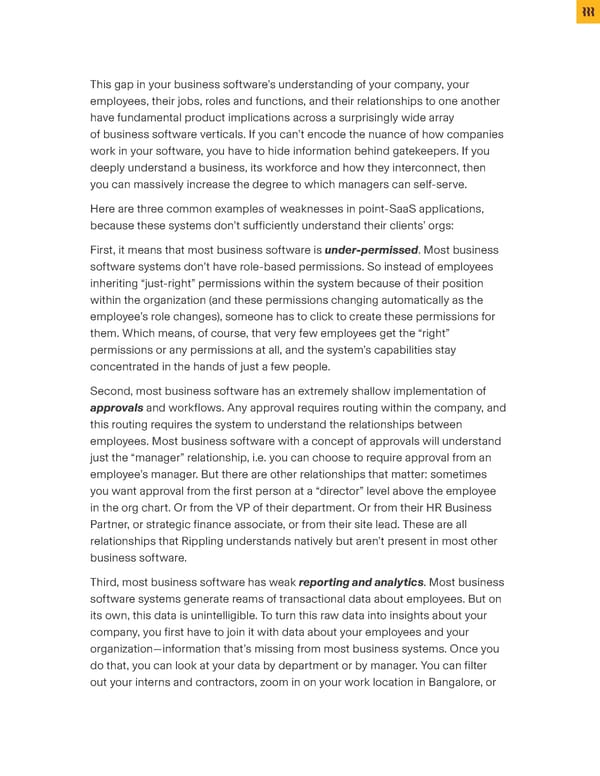This gap in your business software’s understanding of your company, your employees, their jobs, roles and functions, and their relationships to one another have fundamental product implications across a surprisingly wide array of business software verticals. If you can’t encode the nuance of how companies work in your software, you have to hide information behind gatekeepers. If you deeply understand a business, its workforce and how they interconnect, then you can massively increase the degree to which managers can self-serve. Here are three common examples of weaknesses in point-SaaS applications, because these systems don’t suf昀椀ciently understand their clients’ orgs: First, it means that most business software is under-permissed. Most business software systems don’t have role-based permissions. So instead of employees inheriting “just-right” permissions within the system because of their position within the organization (and these permissions changing automatically as the employee’s role changes), someone has to click to create these permissions for them. Which means, of course, that very few employees get the “right” permissions or any permissions at all, and the system’s capabilities stay concentrated in the hands of just a few people. Second, most business software has an extremely shallow implementation of approvals and work昀氀ows. Any approval requires routing within the company, and this routing requires the system to understand the relationships between employees. Most business software with a concept of approvals will understand just the “manager” relationship, i.e. you can choose to require approval from an employee’s manager. But there are other relationships that matter: sometimes you want approval from the 昀椀rst person at a “director” level above the employee in the org chart. Or from the VP of their department. Or from their HR Business Partner, or strategic 昀椀nance associate, or from their site lead. These are all relationships that Rippling understands natively but aren’t present in most other business software. Third, most business software has weak reporting and analytics. Most business software systems generate reams of transactional data about employees. But on its own, this data is unintelligible. To turn this raw data into insights about your company, you 昀椀rst have to join it with data about your employees and your organization—information that’s missing from most business systems. Once you do that, you can look at your data by department or by manager. You can 昀椀lter out your interns and contractors, zoom in on your work location in Bangalore, or
 Investor Memo 2024 Page 4 Page 6
Investor Memo 2024 Page 4 Page 6